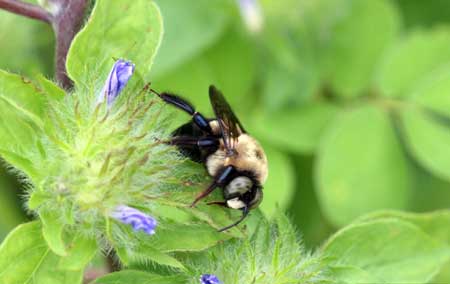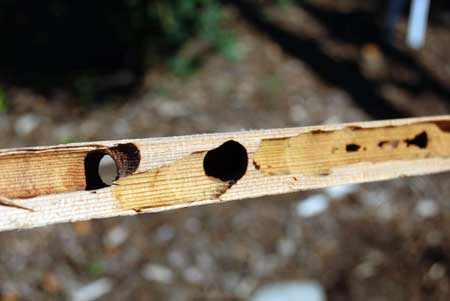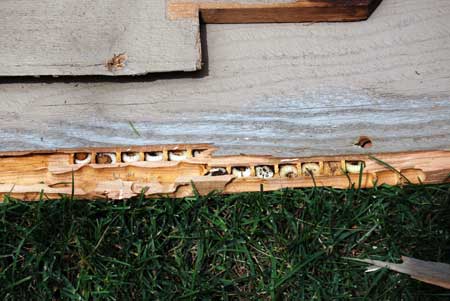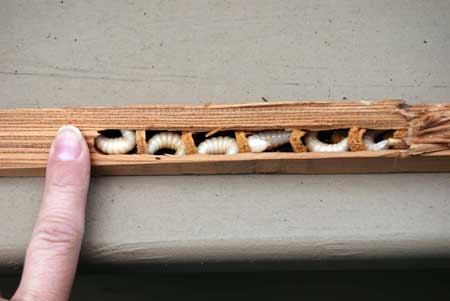Carpenter bees wreaking havoc in Ann Arbor
Editor’s note: This article is from the archives of the MSU Crop Advisory Team Alerts. Check the label of any pesticide referenced to ensure your use is included.
Sandy Heng, a homeowner in Ann Arbor emailed me the best photographs of carpenter bee damage I have seen. Her email also included a plea for help for many others living in her neighborhood. The carpenter bees are literally destroying the cedar fascia and soffit boards that trim the roof line of her home. Carpenter bees will drill into any soft wood, but they really love cedar and redwood, two woods that are commonly used as fascia and soffit boards because they are rot-resistant. Sandy is in the process of replacing her fascia and soffits because cedar is not at all carpenter bee resistant.

A carpenter bee. Photo credit : J. Dell, Courtesy of forestryimages.org
Carpenter bees resemble our large yellow and black bumblebees, but they differ in the amount of hair they have on the top of the abdomen. The top of the abdomen of carpenter bees is bare and , whereas the abdomen of bumblebees is covered with black and yellow hairs. Other species of carpenter bees may be black, green or somewhat purplish with various markings of whitish, yellowish, or reddish hairs, and may be considerably smaller. As Sandy discovered, carpenter bees can be serious wood destroying insects if they choose your home to build their nest galleries. The tunnel created by the boring bee is so perfectly round that it appears to have been drilled by your sharpest drill bit. Carpenter bees seem to prefer softwoods like cedar, redwood and clear pines used in window trim, screens, soffits and fascia boards, and decks. These bees do not eat wood like a termite does, but they use their borings as galleries to raise their young. Each larva is provisioned with a ball of pollen and sealed into a single cell until it completes its development the following spring. Most species of carpenter bees in Michigan have a single generation per year.
Carpenter bees can be controlled by applying a registered insecticide to the gallery opening. If only one or two gallery openings are involved, then an aerosol bee and wasp spray should be enough to kill off the bees. If large areas are affected then a persistent insecticide can be used to treat the entire area. Painting or otherwise sealing the wood is reported to discourage the bees from chewing their holes.



 Print
Print Email
Email








